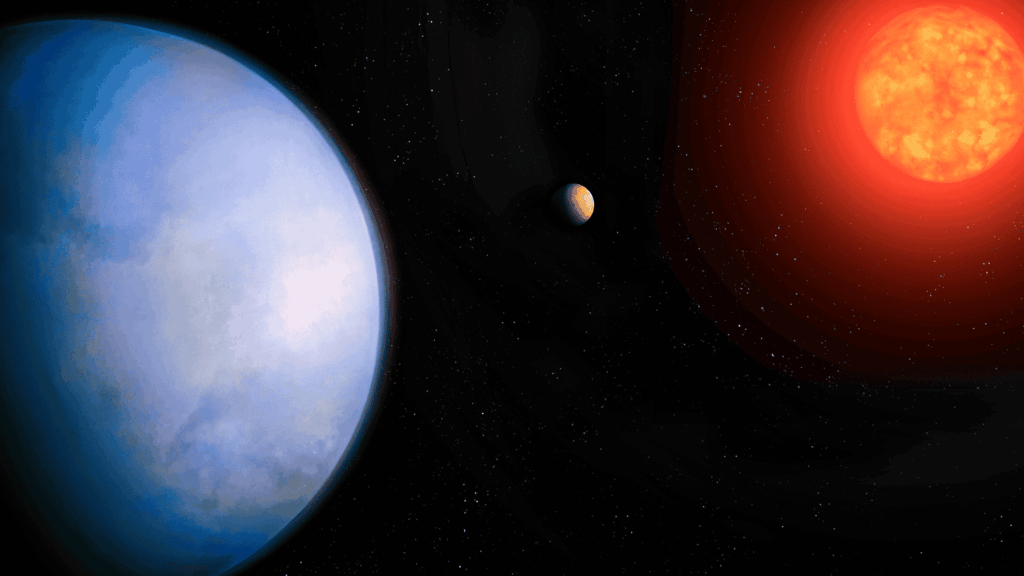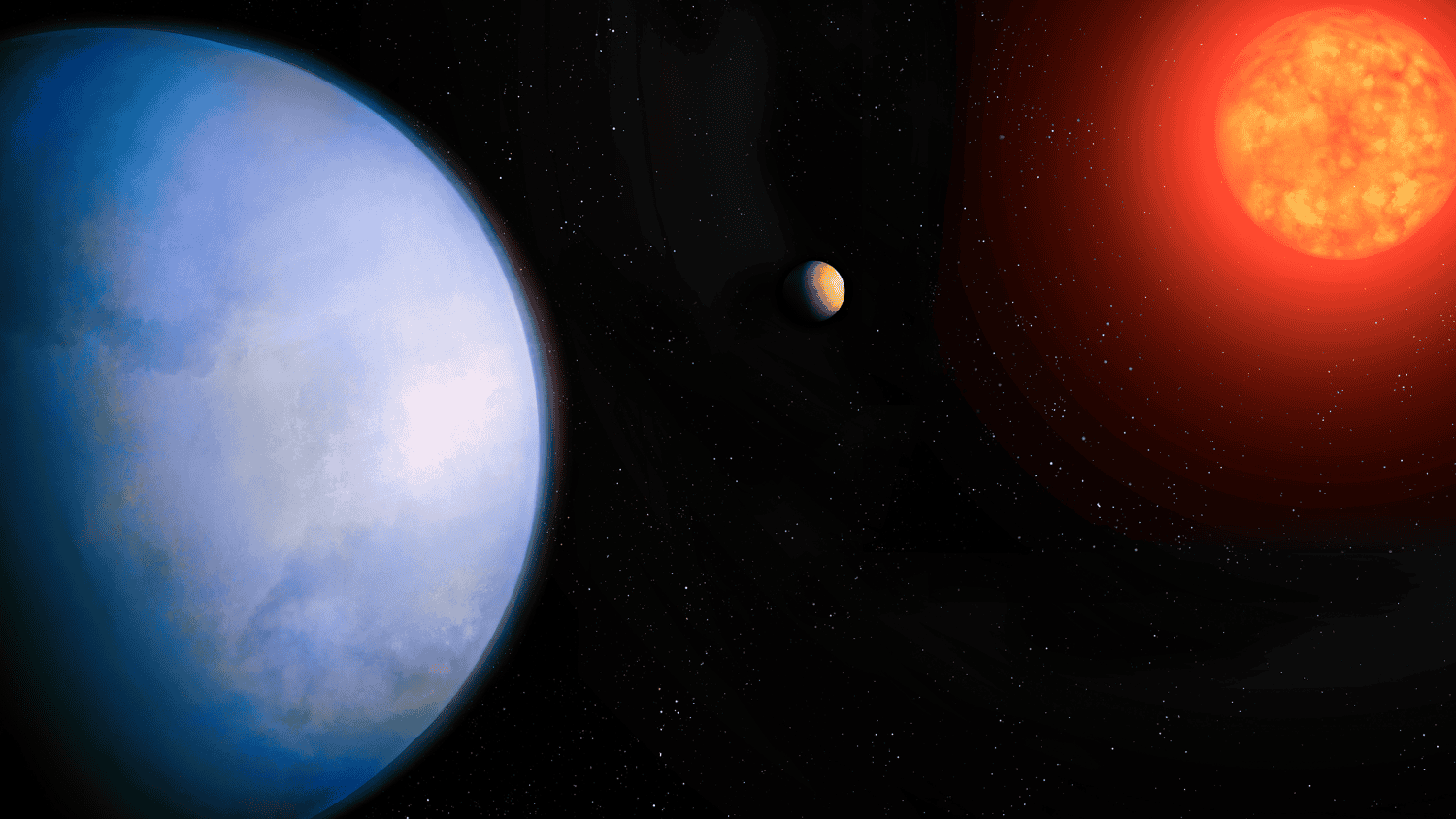 Illustration of Super-Earth GJ 251 c. Credit: University of California, Irvine.
Illustration of Super-Earth GJ 251 c. Credit: University of California, Irvine.
An international team of researchers has identified a strong candidate for a nearby, potentially rocky exoplanet orbiting within its star’s temperate zone. The world, dubbed GJ 251 c, sits 19.6 light-years from Earth and appears to be almost four times our planet’s mass — a “super-Earth” that could, under the right atmospheric conditions, host liquid water.
“We look for these types of planets because they are our best chance at finding life elsewhere,” said Suvrath Mahadevan, the Verne M. Willaman Professor of Astronomy at Penn State and co-author of the study published in The Astronomical Journal. “The exoplanet is in the habitable or the ‘Goldilocks Zone,’ the right distance from its star that liquid water could exist on its surface, if it has the right atmosphere.”
The find is the payoff from playing the long game. Over two decades of radial-velocity observations — minuscule, periodic shifts in a star’s light caused by an orbiting planet’s tug — were stitched together and reanalyzed with help from two ultra-stable spectrographs with Penn State DNA: the Habitable-Zone Planet Finder (HPF) on the Hobby-Eberly Telescope in Texas and NEID on the WIYN 3.5-meter telescope at Kitt Peak National Observatory in Arizona.
HPF, a high-precision near-infrared spectrograph, targets cool, nearby stars where Earth-size planets are easiest to tease out.
“We call it the Habitable Zone Planet Finder, because we are looking for worlds that are at the right distance from their star that liquid water could exist on their surface,” Mahadevan said. “This has been the central goal of that survey. This discovery represents one of the best candidates in the search for atmospheric signature of life elsewhere in the next five to 10 years.”
The host star, GJ 251, already had one previously known planet, GJ 251 b, an inner world that loops the star every two weeks. By refining that earlier signal across a 20-year baseline, the team improved its model of the star’s motion, then layered in HPF’s high-precision measurements.
A second, stronger periodicity popped out: A 54-day tug consistent with a larger companion, the newly identified GJ 251 c. NEID observations independently backed up the HPF-driven result.
The murky divide
GJ 251 c’s mass places it in the murky divide where planets can be dense and rocky or veer into mini-Neptune territory with thick atmospheres. Because the planet orbits in the star’s mild-temperature zone and is both close and bright by exoplanet standards, it vaults near the front of the line for future atmospheric studies.
While today’s telescopes can’t snap a picture or sniff the air of GJ 251 c directly, the next wave of 30-meter-class ground-based observatories and upgraded instruments could change that equation, especially if the planet’s atmosphere contains gases that betray biological or geological processes.
“This discovery is a great example of the power of multi-disciplinary research at Penn State,” said Eric Ford, distinguished professor of astronomy and astrophysics and director of research for the university’s Institute of Computational & Data Sciences.
“Mitigating stellar activity noise required not just cutting-edge instrumentation and telescope access, but also customizing the data science methods for the specific needs of this star and combination of instruments.”
For now, the case for GJ 251 c rests on its gravitational pull. If follow-up observations can pin down the planet’s radius — such as via a lucky transit across the star’s face or future imaging — astronomers could calculate its density and get a firmer handle on whether it’s a true rocky super-Earth or something puffier. Either way, its orbital period, mass, and location in the habitable zone make it a high-value target.
“We are always focused on the future,” Mahadevan said. “Whether that’s making sure the next generation of students can engage in cutting-edge research or designing and building new technology to detect potentially habitable planets.”
Mahadevan and students are already mapping out observation strategies for when new 30-meter-class telescopes come online. Instruments purpose-built to steady starlight and peel apart spectra could, at last, let scientists search GJ 251 c’s skies for molecules like water vapor, oxygen, methane, or carbon dioxide. These are clues that can help tell a world’s story, even from light-years away.
“While we can’t yet confirm the presence of an atmosphere or life on GJ 251 c, the planet represents a promising target for future exploration,” Mahadevan said. “We made an exciting discovery, but there’s still much more to learn about this planet.”

